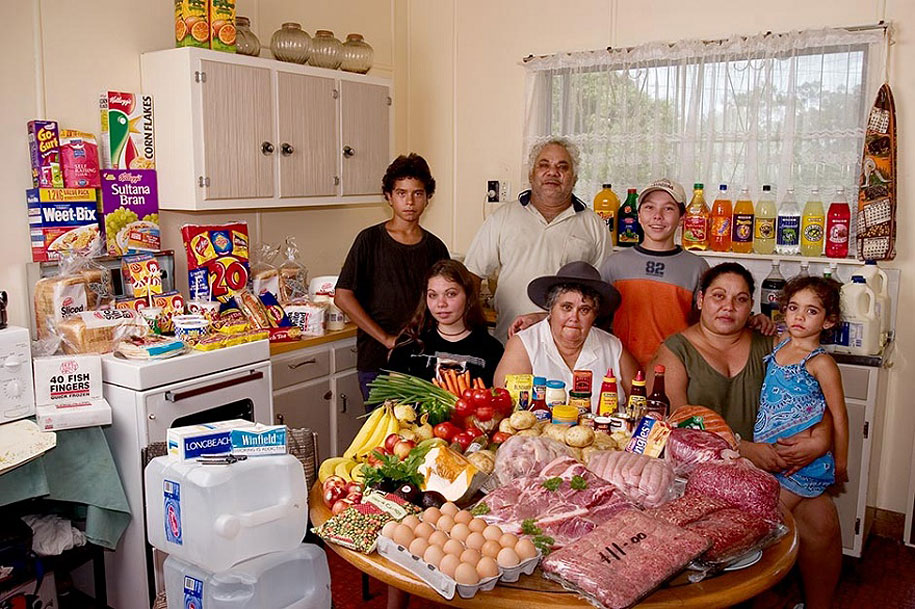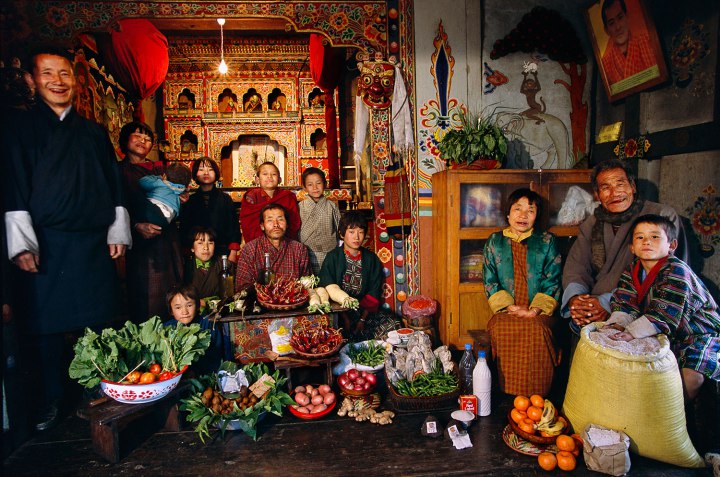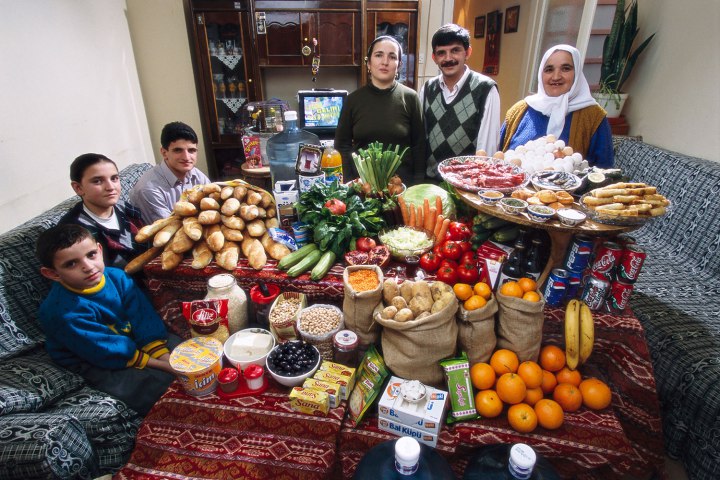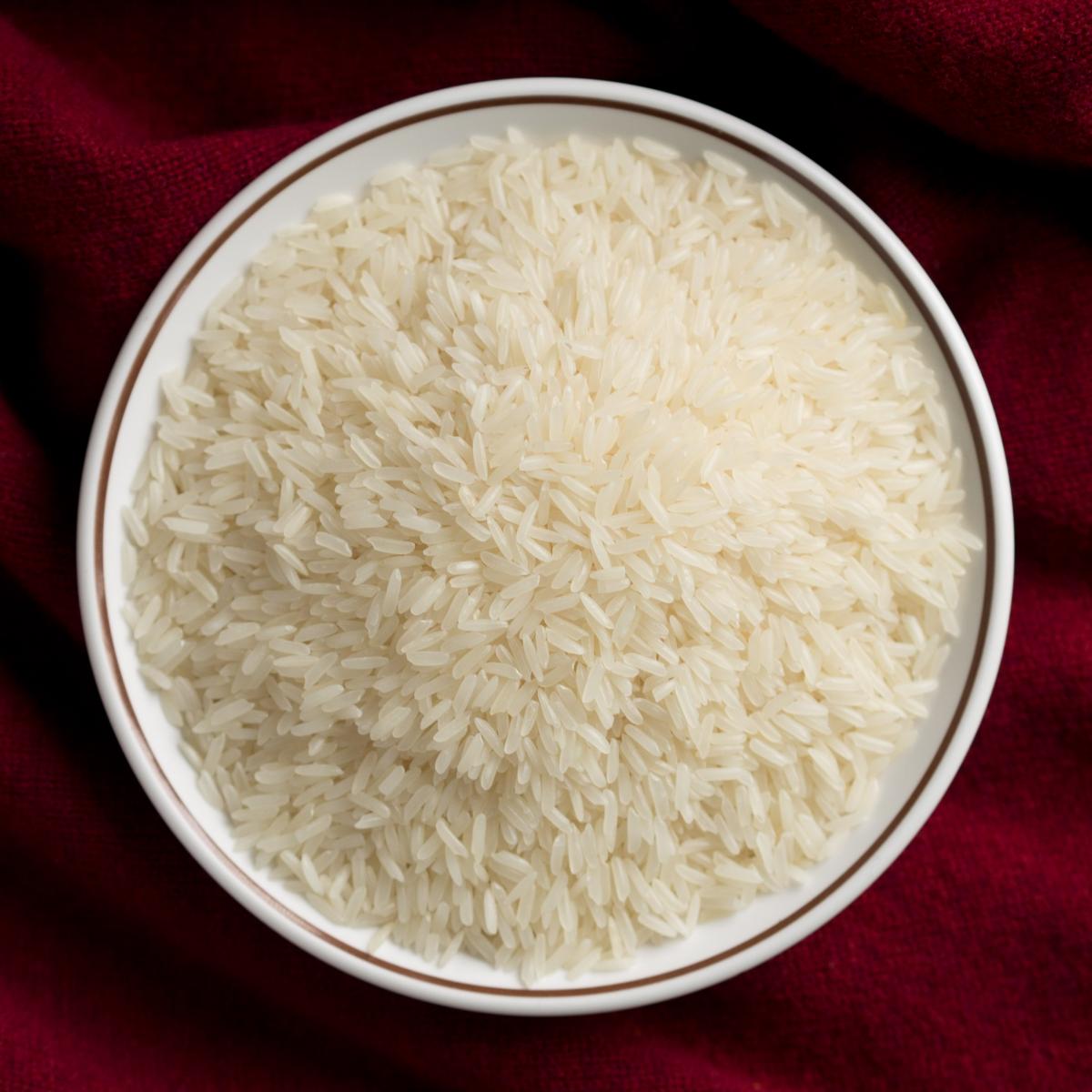Christine Ro explores how plant-based diets and ‘living below the line’ go hand in hand.
The E words are common criticisms of vegans. ‘Elitist’ and ‘expensive’, that is. From this perspective, people whose diets centre on plants must spend an inordinate amount of time and money in posh health food stores in wealthy countries. ‘Real’ people can’t be vegan, it’s said.
But many ordinary people do primarily, and as a matter of course, eat plants. This is clear from global comparisons of dietary habits. Take the families profiled in What the World Eats, for instance. This 2008 work of child-friendly photojournalism explores a typical week’s worth of meals for households on every continent, detailing what type of food they buy and how much they spend doing so. It’s difficult to capture the dietary diversity within a country when only a few households are sampled, but these are reasonably representative. Overall, and perhaps unsurprisingly, the What the World Eats families in wealthier countries tend to consume more animal products. Some examples are given below.
A week’s worth of food
On average, the United States is one of the world’s largest consumers of meat (over 270 pounds per person per year). It also has the highest caloric intake. Take the What the World Eats portrait of the Revises of North Carolina. Food-wise, the Revises spend the most on beverages, fast food, meat, fish and eggs. This last category accounts for 16% of their weekly food costs, while grains and starches make up 5%.
 Australia is another meat-loving country. Also like the US, it is a nation that spends very little on food eaten at home (10% of consumer spending vs. less than 6% in the US). What the World Eats features an aboriginal Australian family, the Browns of Riverview, whose diets have changed within a generation as they transitioned from the rural Outback to suburban life. The Browns spend three times as much on meat, fish, and eggs as they do on any other category of food.
Australia is another meat-loving country. Also like the US, it is a nation that spends very little on food eaten at home (10% of consumer spending vs. less than 6% in the US). What the World Eats features an aboriginal Australian family, the Browns of Riverview, whose diets have changed within a generation as they transitioned from the rural Outback to suburban life. The Browns spend three times as much on meat, fish, and eggs as they do on any other category of food.
On the other end of the spectrum, one of the countries with the world’s lowest meat consumption is India, where 7 pounds of meat are eaten per person each year (2.6% of the US rate). 29% of Indians’ consumer spending goes to food eaten at home; thus Indians spend almost five times as much (proportionally) as Americans on food. As is common among Hindus, the Patkars of Ujjain abstain from eating meat and fish. The food category they spend the most money on is dairy (26% of their weekly shop), followed by fruits, vegetables, and nuts (21%).

The Bhutanese also eat very little meat. The Namgays of Shingkhey Village don’t pay for dairy products, as they make their own from their livestock. The family eats fish or meat once or twice a month: as Buddhists, they only eat meat from animals that die by accident. Their biggest category of food spending is on fruits, vegetables, and nuts – $1 out of total weekly food spending of $5. This family, in which one parent is a farmer and the other is a village mystic, spends no money on snacks, desserts, or eating out.
Like the Namgays, the Aymes of Tingo, a village in the high Andes mountains of Ecuador, do not pay for dairy, as milk comes from the family’s cows. Nor do they buy meat, fish, eggs, beverages, snacks, desserts, or meals out. The Aymes spend the most money on grains and starches, which they carry by horse up a mountain.
The Natomos of Kouakorou, Mali have a very short list of food purchases. The only dairy item they buy is sour milk, and they only buy dried fish to include in okra soup when they can afford it. They do not purchase meat or eggs. This extended family of 15, including two women married to one man, eats fruit only when it is in season locally; the exception is oranges. Porridge is at the core of their meals, and there are never any leftovers.
 Finally, the Çeliks of Istanbul, Turkey also live together as an extended family. Fruits, vegetables, and nuts are by far the biggest category of food spending, making up 39% of the week’s total. Dairy and meat/fish/eggs each account for 8%. This family of 6, brought together by an arranged marriage, lives in a one-bedroom apartment. McDonald’s is a treat for them, to be enjoyed four or five times a year.
Finally, the Çeliks of Istanbul, Turkey also live together as an extended family. Fruits, vegetables, and nuts are by far the biggest category of food spending, making up 39% of the week’s total. Dairy and meat/fish/eggs each account for 8%. This family of 6, brought together by an arranged marriage, lives in a one-bedroom apartment. McDonald’s is a treat for them, to be enjoyed four or five times a year.
None of these families identifies as vegan or flexitarian. Yet many of them eat meat very sparingly, from the Turkish family that eats fish twice a month to the Malian one that buys dried fish only when relatively well-off. For the Patkars of India, vegetarianism is conventional given their Hindu beliefs, while the Aymes of Ecuador are almost vegan by necessity, given the cost of meat, fish, and eggs. A typical meal of porridge and okra soup for the Malian Natomos is vegan – as are, of course, many common foods in the US, from a PB&J to a vegetable soup. And while all of these families consume dairy, it is not responsible for a big chunk of spending, either because they produce their own milk (Bhutan) or because they consume very little (Mali).
What emerges from What the World Eats and other explorations of dietary habits around the world is that in many lower-income countries, meat (and sometimes dairy) is special; it’s eaten on holidays, during times of prosperity, or when guests are around. The idea that meat is a necessity is a wealthy, Western phenomenon.
Eating below the line

Consumption challenges give another clear indication that veganism is both affordable and normal for those of constrained means – including in rich countries. You may have heard of Live Below the Line. This campaign challenges people living in the UK, US, Canada, New Zealand and Australia to keep their food costs for one week below the globally set poverty line. Adjusted, this corresponds to $1.50 in the US, £1 in the UK, and so on. Participants are encouraged to share information about their experiences limiting food spending, and to raise money for anti-poverty organizations. Collectively millions of dollars have been generated.
While living temporarily below this line is a far cry from the actual experience of extreme poverty, this type of experiment is fascinating on several levels. For one thing, it puts culinary resourcefulness on display. Much of the food that gets menu planned for Live Below the Line is largely or wholly vegan. The Australian branch, for instance, has put together a last-minute meal plan consisting entirely of plants: oats, rice, lentils, pumpkin, frozen vegetables, and an apple.
A 2015 shopping list published by the children’s charity Plan UK is also vegan (depending on how liberally you interpret the word “spread”). The list can be divided into starches (oats, flour, potatoes); legumes (baked beans, kidney beans, split peas, peanut butter); vegetables (canned tomatoes, carrots, onions, greens); and seasonings (sugar, spread, salt, baking powder, sunflower oil, vegetable stock cubes).
It’s not just charity guidelines that promote plant-based eating when on this budget. It’s common for the participants living on (not even) peanuts to realize that grains and pulses are the most affordable and filling option for those of limited means. Their stories also showcase ingenuity: from picking tea leaves from a garden or reusing tea bags, to turning mushy rice and jam into a pudding or using the salty water from canned beans for seasoning.
 Further context on food expense comes from crowdsourced data about food prices across the world. Numbeo provides information for the same basic set of 11 foods. Of these chicken breasts are always the most expensive, followed generally by eggs and local cheese, while the least expensive items tend to be lettuce and rice. Granted, this basket of items is not appropriate to every country, but for comparison purposes it’s useful. The dataset shows, for example, that fruits tend to be more expensive than vegetables and grains – which comes through in the family profiles from What the World Eats as well as the stories from Live Below the Line.
Further context on food expense comes from crowdsourced data about food prices across the world. Numbeo provides information for the same basic set of 11 foods. Of these chicken breasts are always the most expensive, followed generally by eggs and local cheese, while the least expensive items tend to be lettuce and rice. Granted, this basket of items is not appropriate to every country, but for comparison purposes it’s useful. The dataset shows, for example, that fruits tend to be more expensive than vegetables and grains – which comes through in the family profiles from What the World Eats as well as the stories from Live Below the Line.
More specifically, 250 grams of white rice cost 28 cents in India, while the same mass of chicken breasts cost 77 cents. In Ecuador, the rice is 35 cents, while the chicken is $1.46. A Turkish person would pay around 40 cents for rice and 95 cents for chicken. For Australia the comparison is 53 cents for rice vs. $1.95 for chicken. And in the US, 85 cents would buy you the rice, while the chicken would be $2.14. The price of rice as a proportion of the price of chicken ranges from 24% in Ecuador to 42% in Turkey. Clearly, the financial argument against veganism is hard to sustain.
Debunking the myth
It would be wrong to trivialize the enormous problems of malnutrition and food insecurity faced by the poor, whether they live in low-income countries or wealthier regions: the latter may well have to face the issue of food deserts. This discussion merely demonstrates that when people talk dismissively of those who avoid animal products, they neglect the situation of Buddhist monks in China, Christian Copts in Ethiopia, Orthodox fasters in Romania, the numerous genetically lactose-sensitive Asians, and low-income urbanites in many countries.
Not all plant eaters are pampered. Not all pulse-based meals are prepared by hippies.
By arguing that relying on plant-based foods is elitist, we ignore the reality of daily food choices for a large chunk of the world. Whether someone tends toward plant-based diets because they need to (e.g. poverty), because they want to (e.g. ethics), or because there may not be a clear line between the two (e.g. religion), eating plants – when examined at a global scale – is clearly more than just a fringe lifestyle.
 By Christine Ro
By Christine Ro
Christine is a London-based writer and editor who works part-time for the International Institute for Environment and Development.
Try out our nutritious, easy and budget-friendly weekly vegan meal plan today.
The views expressed by our bloggers are not necessarily the views of The Vegan Society.


Comments
Meat is luxury food and resource-intensive